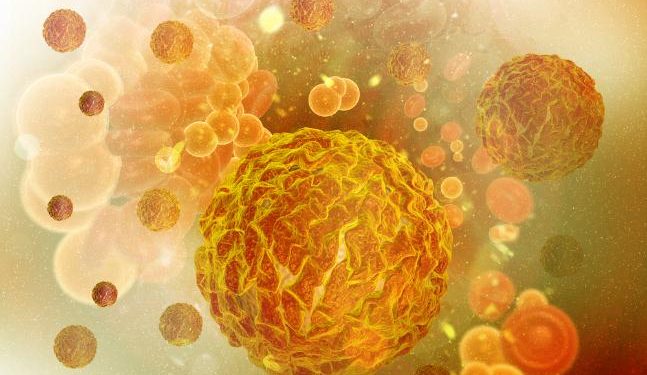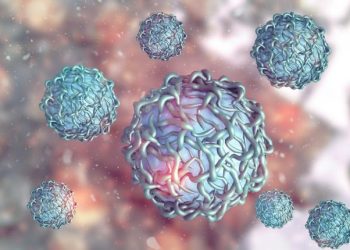Ewing sarcoma is caused by genetic changes that happen after birth, but researchers don’t know what triggers these changes. They do know that these cancers develop more often in teens and young adults, especially during puberty when bones are growing fast.
Children with ewing sarcoma are treated with surgery and chemotherapy. Surgeons may be able to save an arm or leg so that it doesn’t need to be amputated.
Diagnosis
Before starting treatment, the healthcare team will diagnose Ewing sarcoma by taking a history of your child’s symptoms and doing tests. These tests include X-rays of the painful area of the bone and blood tests. They may also do a procedure called a biopsy to remove a sample of the tissue for examination under a microscope. A specialist doctor who has experience with Ewing sarcoma can perform the biopsy. This may be done by making an incision or with a needle.
The biopsy can help confirm a diagnosis of Ewing sarcoma. It can also find out how far the cancer has spread. The process of finding out how far the cancer has spread is called staging. This information helps doctors plan the best treatment.
Many young people diagnosed with Ewing sarcoma can be cured. However, some children treated for this type of cancer have late effects caused by the strong treatments used to treat it. These can include heart and lung problems, emotional and learning difficulties, and growth issues.
Ewing sarcoma usually starts in the long bones of the legs and arms, or in the pelvis, chest wall or spine. It can also start in the soft tissues around the bones. In addition, it can spread to the brain and other areas of the body.
In most cases of Ewing sarcoma, the first treatment is chemotherapy. This is given in combination with surgery or radiation therapy. The combination is more effective than either treatment alone.
The type of chemotherapy drugs and how much is given depends on the size and location of the tumor, as well as the age of your child. In general, younger children have lower doses of chemotherapy and receive less intensive therapy than adults.
A molecular test can be done to check the DNA of your child’s cancer cells. This can show if the cells have certain changes that are found only in Ewing sarcoma. These changes mean the cells can’t grow or behave normally.
Your child will have regular follow-up appointments. They will have X-rays and scans to see if the cancer has come back (recurred). If it has, more treatment will be needed.
Treatment
Treatment for Ewing sarcoma often starts with chemotherapy. These cancer-fighting medicines are given through a vein (IV) or by mouth. They can be used alone or in combination with other treatments. X-rays and other tests are done to check how well treatment is working. Often a sample of tissue from the tumor is tested for changes in the EWSR1 gene or its fused partner, FLI1. These tests can help diagnose Ewing sarcoma.
In general, treatment for Ewing sarcoma is very effective. The goal is to cure the cancer without harming normal bone and soft tissues as much as possible. About 70 percent of children with Ewing sarcoma are cured. Teens whose tumors are found before they spread are more likely to be cured than those who have the cancer in more advanced stages. The survival rate is lower if the tumor is in the pelvis or near the spinal cord.
Most cases of Ewing sarcoma occur in the long bones of the arms and legs, including the thighbone (femur), shinbone (tibia) and humerus. Tumors may also develop in the chest wall and spine. Pain is a common symptom of Ewing sarcoma. The pain can be mild or intense, and it may change over time. Sometimes the cancer can cause other symptoms, such as numbness and weakness in the legs or arms.
Surgery may be needed to remove the tumor and parts of the bone where it is growing. If the tumor is in an arm or leg, surgeons might be able to use a special type of surgery called limb-saving surgery. This can allow kids to keep their arms and legs, even if the cancer has spread.
Some patients with Ewing sarcoma need radiation therapy to help control the disease and keep it from coming back. Radiation is usually given after several weeks or months of chemo, to kill any remaining cancer cells. It is often combined with surgery or other treatments, such as targeted therapy.
Some patients with relapsed Ewing sarcoma benefit from a second round of chemotherapy. This is especially true if the cancer has not spread to other parts of the body, such as the lungs. Combinations of chemotherapy like vincristine/irinotecan/temozolomide or gemcitabine/docetaxel have been successful in some studies.
Symptoms
Your child’s healthcare team will use tests and procedures to detect and diagnose Ewing sarcoma and find out how far it has spread. They may also use these tests to help plan treatment. These include:
X-rays and other imaging tests. These can make pictures of bones and soft tissues to see if there are any tumors. These tests may also be used to find out if the cancer has spread within or around the bones and soft tissue, or to other parts of the body. This process is called staging.
A biopsy is a sample of tissue tested to check for cancer. It can be done by making a cut (incisional biopsy) or using a needle to remove a small amount of tissue (needle biopsy). If the biopsy shows that your child has Ewing sarcoma, doctors will plan treatment.
Ewing sarcoma is usually treated with surgery, chemotherapy and radiotherapy. These are often given together at the same time. Radiotherapy uses high energy rays to destroy cancer cells. It can be used before or after surgery, or in place of surgery if the tumour is too big to remove surgically. It is very effective for most children with Ewing sarcoma.
The most common way for Ewing sarcoma to grow is when cancer cells break away from the original tumor and travel to other areas of the body. When this happens, the new tumors are called metastases. In most cases, the metastatic tumors are the same type of cancer as the original tumor.
This is why it is important to have all of the Ewing sarcoma cancer cells removed when you are diagnosed. The chromosomal change that causes Ewing sarcoma is only found in the cancer cells and not in healthy cells, so it is not contagious or hereditary.
The strong treatments that are used to treat Ewing sarcoma can cause many side effects. These can happen during treatment or in the years after it is finished. Your child’s healthcare team will teach you how to manage the side effects. Some of these side effects may be permanent. Your child will need regular follow-up appointments, with X-rays or scans as needed.
Prevention
Ewing sarcoma occurs when cells develop changes (mutations) in their DNA. These changes allow the cancer cells to grow and multiply more quickly than normal cells, and they don’t die when they should.
The mutated DNA in cells that form Ewing sarcoma most often involves the fusing of genetic material from chromosome 11 and chromosome 22, which “switches on” the gene that controls cell growth. Researchers don’t know what causes these chromosomal changes to happen in the first place. They don’t have any way to prevent them.
People who were treated for Ewing sarcoma as children and adolescents may have health effects, called late effects, months or years after their treatment ends. These effects can be mild or severe, and they may be different for each person.









